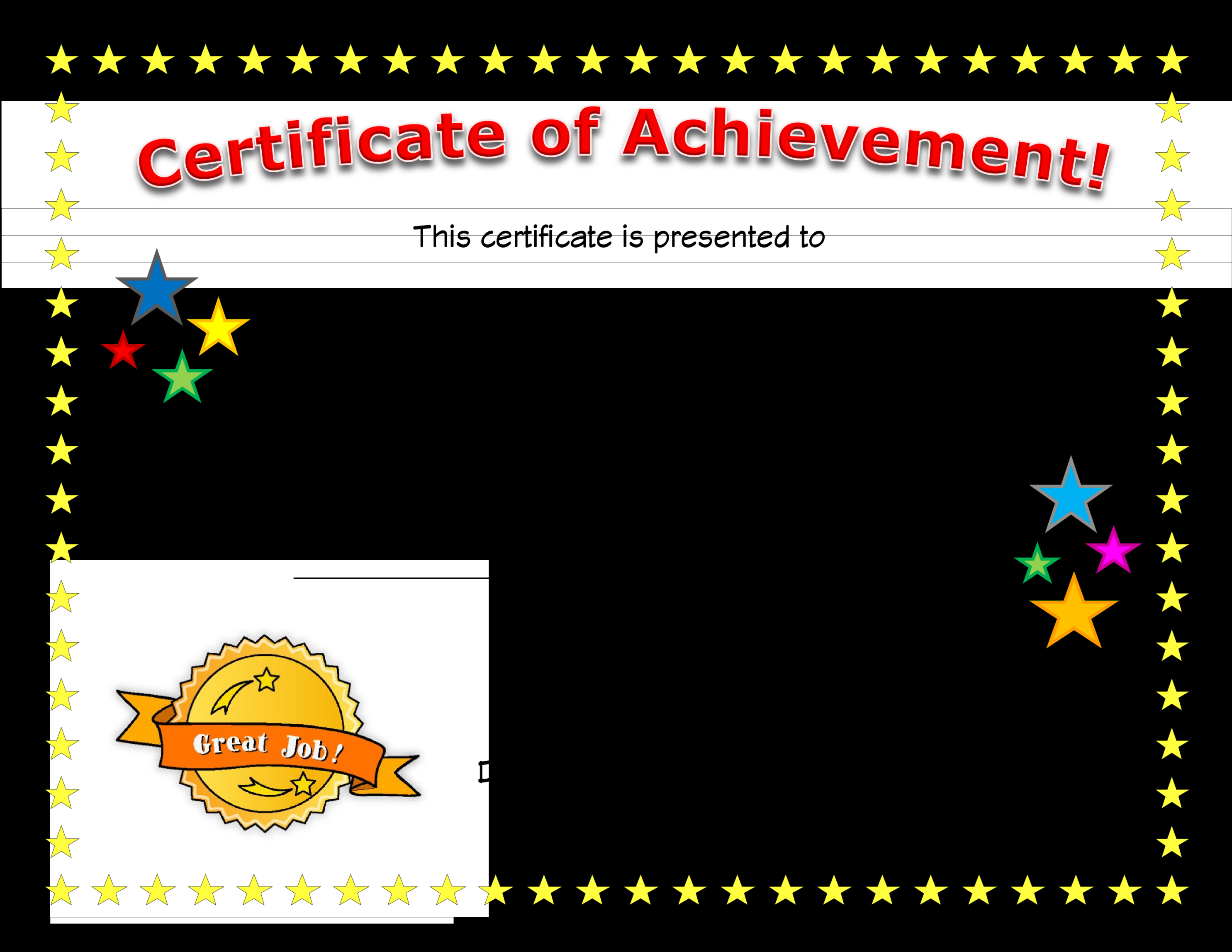A Certificate of achievement is a valuable tool for recognizing and rewarding children’s accomplishments. It serves as a tangible reminder of their hard work and dedication, boosting their self-esteem and motivating them to strive for excellence. When creating a certificate of achievement for kids, it is essential to design a template that is both visually appealing and professionally crafted.
Design Elements for Professionalism and Trust

To convey professionalism and trust, consider incorporating the following design elements into your certificate template:
1. Font Selection: Choose fonts that are easy to read and appropriate for children. Avoid overly decorative or playful fonts that may detract from the certificate’s formal appearance. Opt for fonts with clean lines and a classic feel, such as Times New Roman, Arial, or Calibri.
2. Layout and Composition: A well-structured layout is crucial for a professional certificate. Ensure that the text and graphics are balanced and easy to follow. Use a consistent margin throughout the certificate to create a clean and polished look. Consider using a border to frame the certificate and add a touch of elegance.
3. Color Scheme: Choose a color scheme that is both visually appealing and appropriate for the occasion. Avoid overly bright or garish colors that may overwhelm the certificate. Opt for a color palette that conveys professionalism and trust, such as shades of blue, green, or gold.
4. Graphics: Incorporate graphics that are relevant to the achievement being recognized. Avoid using generic clip art or low-quality images. Consider using illustrations or photographs that are specifically designed for children’s certificates.
5. Text: Use clear and concise language that is easy for children to understand. Avoid using jargon or technical terms. Highlight the child’s achievement in a way that is both informative and inspiring.
Key Sections of a Certificate of Achievement
A well-designed certificate of achievement should include the following key sections:
1. Header: The header should contain the name of the organization or institution issuing the certificate. It may also include a logo or other identifying information.
2. Salutation: Address the recipient by their full name.
3. Achievement Statement: Clearly state the achievement that is being recognized. Use specific and measurable language to describe the accomplishment.
4. Date: Indicate the date the certificate was issued.
5. Signature Line: Provide a space for the authorized person to sign the certificate. This may include the name, title, and signature of the principal, teacher, or other relevant authority.
6. Seal: Consider adding a seal or stamp to the certificate to enhance its authenticity and formality.
Additional Tips for Creating a Professional Certificate
Proofread Carefully: Ensure that there are no errors in spelling, grammar, or punctuation.
By following these guidelines, you can create a professional certificate of achievement that will be treasured by the recipient and their family. A well-designed certificate is a tangible reminder of a child’s accomplishments and can serve as a source of motivation and inspiration for years to come.